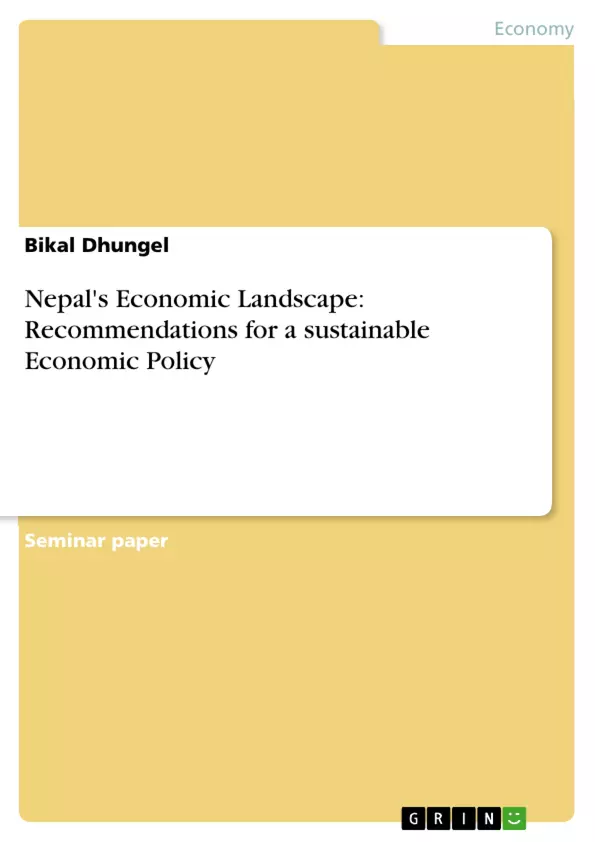The world is changing rapidly. In the last sixty years it has seen miraculous developments. Coming out of the ashes of World War II, Western Europe has established itself as the most stable region of the world. Totally destroyed Japan, having been the victim of the only atomic bomb in human history, which killed hundreds of thousands, has established itself as the strongest economy of Asia, and second only to the United States worldwide. We have seen the rise of South Korea, which had the equal per capita income as Mozambique in late fifties. Today South Korea stands as a developed country. We have seen the growth of China when Mao went. From Deng Xiaoping to Xiang Jemin to Hu Jintao, it kept its economy open and recently overtook Germany as the third largest economy of the world. China is on the way to become the second largest economy. India, from the early ninetees, took similar policy. India grew when the world economy was in downturn. The rise of BRIC (Brazil, Russia, India and China) countries has re-shaped the world order. Mexico proudly declares itself as a North American country today and no more intends to turn back to its old identity as a Central American country. The North American Free Trade Agreement (NAFTA) has been good for Mexican economy as they can sell their products in the United States and Canada now. Indonesia shares similar story. Even though it was runned by one of the terrible dictator of the world, Suharto, he brought liberal policies in the country encouraging Privatisation, Free Trade and more market liberalization. After the Asian financial crisis of 1997, people lost faith in him and finally toppled him. Growth was felt in other parts of the world as well. Emergence of computarized technologies, World Wide Web, digital technologies etc have reshaped the world. Nepal, however, did not change much. Even though it enjoyed the modern developments from other parts of the world, it could not establish itself as a country capable to adopt such changes. There are many things to blame. Ill adviced policies of the past, weak justice system, ineffective education policies, high corruption, nepotism etc are just handful of things.
In this paper, I will point out some sectors which need immediate change in Nepal. I will recommend some policy advices and finally analyse some future scenarios in international level which have huge impact on Nepalese economics and politics.
Inhaltsverzeichnis (Table of Contents)
- Introduction
- Quick Facts
- Economic Reality of Nepal and the way out
- Hurdles of Change
- Current Problems
- Recommendations for key sectors
- Political stability
- Regulated Financial Institutions
- Learning from the ill policies of the past
- Free Trade
- Investment in Tourism
- Investment in Education
- Between Two powers: A chance or a threat
- Conclusion
Zielsetzung und Themenschwerpunkte (Objectives and Key Themes)
This paper aims to identify key areas requiring immediate change in Nepal's economic landscape and propose policy recommendations for sustainable economic growth. It analyzes the current economic realities of Nepal, explores the challenges of change, and examines the potential impact of global trends on Nepal's economy and politics.
- Analyzing Nepal's economic dependency on tourism and remittance
- Highlighting the need for domestic investment and economic diversification
- Examining the influence of China and India on Nepal's political and economic landscape
- Exploring the impact of global economic trends on Nepal's development
- Proposing policy recommendations for key sectors, including political stability, financial institutions, trade, tourism, and education
Zusammenfassung der Kapitel (Chapter Summaries)
The introduction sets the context by showcasing the rapid economic changes witnessed globally over the past six decades, contrasting them with Nepal's stagnant economic growth. It highlights the factors hindering Nepal's progress, including ill-advised policies, weak institutions, and corruption.
The chapter titled "Economic Reality of Nepal and the way out" elaborates on Nepal's dependence on tourism and remittances. It discusses the vulnerabilities of these income sources, particularly in the face of global economic downturns, and emphasizes the crucial need for domestic investment to ensure sustainable growth.
The chapter "Recommendations for key sectors" delves into specific areas demanding immediate attention. It proposes policy recommendations for enhancing political stability, regulating financial institutions, learning from past policy failures, promoting free trade, investing in tourism and education, and fostering responsible economic practices.
Schlüsselwörter (Keywords)
The primary focus of this paper lies on analyzing Nepal's economic landscape, exploring its vulnerabilities and proposing policy recommendations for sustainable growth. Key themes include: economic dependence, tourism, remittances, domestic investment, political stability, financial institutions, free trade, education, and the influence of China and India on Nepal's economy and politics.
- Citation du texte
- Bikal Dhungel (Auteur), 2011, Nepal's Economic Landscape: Recommendations for a sustainable Economic Policy, Munich, GRIN Verlag, https://www.grin.com/document/170979



